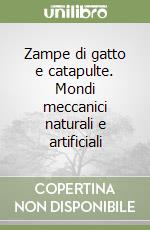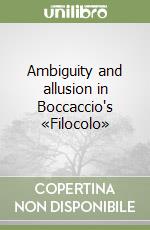 Libri di Steven Vogel su Unilibro.it
)
Libri di Steven Vogel su Unilibro.it
)
|
|
1918 |
 Title :
Why the Wheel Is Round
Title :
Why the Wheel Is RoundAuthor: Steven Vogel Publisher: UNIVERSITY OF CHICAGO PRESS € 17,90
|
|
|
1916 |
 Title :
Why the Wheel Is Round
Title :
Why the Wheel Is RoundAuthor: Vogel Steven Publisher: Univ of Chicago Pr € 37,20
|
 Title :
Thinking Like a Mall
Title :
Thinking Like a MallAuthor: Vogel Steven Publisher: Mit Pr € 26,60
|
 Title :
The Japanese Family in Transition
Title :
The Japanese Family in TransitionAuthor: Vogel Suzanne Hall, Vogel Steven K. (CON) Publisher: Rowman & Littlefield Pub Inc € 41,40
|
|
1915 |
 Title :
Thinking Like a Mall
Title :
Thinking Like a MallAuthor: Vogel Steven Publisher: Mit Pr Environmentalism, in theory and practice, is concerned with protecting nature. But if we have now reached "the end of nature," as Bill McKibben and other environmental thinkers have declared, what is there left to protect? InThinking like a Mall, Steven Vogel argues that environmental thinking would be better off if it dropped the concept of "nature" altogether and spoke instead of the "environment" -- that is, the world that actually surrounds us, which is always abuilt world, the only one that we inhabit. We need to think not so much like a mountain (as Aldo Leopold urged) as like a mall. Shopping malls, too, are part of the environment and deserve as much serious consideration from environmental thinkers as do mountains. Vogel argues provocatively that environmental philosophy, in its ethics, should no longer draw a distinction between the natural and the artificial and, in its politics, should abandon the idea that something beyond human practices (such as "nature") can serve as a standard determining what those practices ought to be. The appeal to nature distinct from the built environment, he contends, may be not merely unhelpful to environmental thinking but in itself harmful to that thinking. The question for environmental philosophy is not "how can we save nature?" but rather "what environment should we inhabit, and what practices should we engage in to help build it?" € 31,90
|
|
|
1914 |
 Title :
Contemporary Menswear
Title :
Contemporary MenswearAuthor: Vogel Steven, Schonberger Nicholas, Gordon Calum Publisher: Thames & Hudson In the past, menswear and creative fashion were not words that were easily associated with one another. While a rich tradition existed in men’s tailoring, menswear was seen as very much the poor relation to womenswear. Times have changed: menswear, notably that created and produced by independent labels, is a hotbed of creativity; separate fashion weeks devoted to menswear are now held in Paris, London, and Milan; and the menswear scene is hotly discussed, critiqued, and debated in the press and online.Contemporary Menswear presents in-depth profiles of more than fifty of the designers, labels, brands, stores, websites, and blogs that have shaped and continue to shape menswear in the twenty-first century. From classic heritage labels such as Albam Clothing through to dynamic, new labels such as Tellason (crafted, desirable denim) this is a detailed and insightful guide to an independent menswear scene that has grown to be a respected and highly creative part of global fashion. € 31,20
|
|
|
1913 |
 Title :
The Life of a Leaf
Title :
The Life of a LeafAuthor: Vogel Steven Publisher: Univ of Chicago Pr In its essence, science is a way of looking at and thinking about the world. In The Life of a Leaf, Steven Vogel illuminates this approach, using the humble leaf as a model. Whether plant or person, every organism must contend with its immediate physical environment, a world that both limits what organisms can do and offers innumerable opportunities for evolving fascinating ways of challenging those limits. Here, Vogel explains these interactions, examining through the example of the leaf the extraordinary designs that enable life to adapt to its physical world. In Vogel’s account, the leaf serves as a biological everyman, an ordinary and ubiquitous living thing that nonetheless speaks volumes about our environment as well as its own. Thus in exploring the leaf’s world, Vogel simultaneously explores our own. A companion website with demonstrations and teaching tools can be found here: http://www.press.uchicago.edu/sites/vogel/index.html € 26,60
|
 Title :
Comparative Biomechanics
Title :
Comparative BiomechanicsAuthor: Vogel Steven Publisher: Princeton Univ Pr Why do you switch from walking to running at a specific speed? Why do tall trees rarely blow over in high winds? And why does a spore ejected into air at seventy miles per hour travel only a fraction of an inch? Comparative Biomechanics is the first and only textbook that takes a comprehensive look at the mechanical aspects of life--covering animals and plants, structure and movement, and solids and fluids. An ideal entry point into the ways living creatures interact with their immediate physical world, this revised and updated edition examines how the forms and activities of animals and plants reflect the materials available to nature, considers rules for fluid flow and structural design, and explores how organisms contend with environmental forces. Drawing on physics and mechanical engineering, Steven Vogel looks at how animals swim and fly, modes of terrestrial locomotion, organism responses to winds and water currents, circulatory and suspension-feeding systems, and the relationship between size and mechanical design. He also investigates links between the properties of biological materials--such as spider silk, jellyfish jelly, and muscle--and their structural and functional roles. Early chapters and appendices introduce relevant physical variables for quantification, and problem sets are provided at the end of each chapter. Comparative Biomechanics is useful for physical scientists and engineers seeking a guide to state-of-the-art biomechanics. For a wider audience, the textbook establishes the basic biological context for applied areas--including ergonomics, orthopedics, mechanical prosthetics, kinesiology, sports medicine, and biomimetics--and provides materials for exhibit designers at science museums.
€ 111,60
|
|
2009 |
 Title :
Glimpses of Creatures in Their Physical Worlds
Title :
Glimpses of Creatures in Their Physical WorldsAuthor: Vogel Steven Publisher: Princeton Univ Pr Glimpses of Creatures in Their Physical Worlds offers an eye-opening look into how the characteristics of the physical world drive the designs of animals and plants. These characteristics impose limits but also create remarkable and subtle opportunities for the functional biology of organisms. In particular, Steven Vogel examines the size and scale, and trade-offs among different physical processes. He pays attention to how the forms and activities of animals and plants reflect the materials available to nature, and he explores the unique constraints and possibilities provided by fluid flow, structural design, and environmental forces. Each chapter of the book investigates a facet of the physical world, including the drag on small projectiles; the importance of diffusion and convection; the size-dependence of acceleration; the storage, conduction, and dissipation of heat; the relationship among pressure, flow, and choice in biological pumps; and how elongate structures tune their relative twistiness and bendiness. Vogel considers design-determining factors all too commonly ignored, and builds a bridge between the world described by physics books and the reality experienced by all creatures. Glimpses of Creatures in Their Physical Worlds contains a wealth of accessible information related to functional biology, and requires little more than a basic background in secondary-school science and mathematics. Drawing examples from creatures of land, air, and water, the book demonstrates the many uses of biological diversity and how physical forces impact biological organisms. € 48,20
|
|
|
2007 |
 Title :
The Political Economy Reader
Title :
The Political Economy ReaderAuthor: Barma Naazneen H. (EDT), Vogel Steven Kent (EDT) Publisher: Routledge The Political Economy Reader combines in a single volume core writings on political economy from four social science disciplines: economics, political science, sociology, and history. Arguing that markets should be viewed as institutions that are deeply embedded in politics and society, editors Barma and Vogel combine a theoretical approach to understanding capitalism with analyses of real-world market systems around the world today. The Reader first lays the conceptual groundwork, covering transaction costs, property rights, corporate governance systems, power relationships, social networks and cultural norms, and then turns to real-world practices and reforms. Contemporary debates focus on deregulation in advanced industrial countries, privatization in transitional economies, and liberalization in developing countries. The volume concludes with selections on the information technology revolution and globalization.
€ 68,00
|
|
|
2006 |
 Title :
Japan Remodeled
Title :
Japan RemodeledAuthor: Vogel Steven Kent Publisher: Cornell Univ Pr As the Japanese economy languished in the 1990s Japanese government officials, business executives, and opinion leaders concluded that their economic model had gone terribly wrong. They questioned the very institutions that had been credited with Japan's past success: a powerful bureaucracy guiding the economy, close government-industry ties, 'lifetime' employment, the main bank system, and dense interfirm networks. Many of these leaders turned to the U.S. model for lessons, urging the government to liberate the economy and companies to sever long-term ties with workers, banks, suppliers, and other firms.Despite popular perceptions to the contrary, Japanese government and industry have in fact enacted substantial reforms. Yet Japan never emulated the American model. As government officials and industry leaders scrutinized their options, they selected reforms to modify or reinforce preexisting institutions rather than to abandon them. In Japan Remodeled, Steven Vogel explains the nature and extent of these reforms and why they were enacted.Vogel demonstrates how government and industry have devised innovative solutions. The cumulative result of many small adjustments is, he argues, an emerging Japan that has a substantially redesigned economic model characterized by more selectivity in business partnerships, more differentiation across sectors and companies, and more openness to foreign players. € 25,80
|
|
|
2001 |
 Title :
Zampe di gatto e catapulte. Mondi meccanici naturali e artificiali
Title :
Zampe di gatto e catapulte. Mondi meccanici naturali e artificialiAuthor: Vogel Steven Publisher: Giovanni Fioriti Editore € 22,00
Scontato: € 20,90
|
|
|
2000 |
 Title :
Cats' Paws and Catapults
Title :
Cats' Paws and CatapultsAuthor: Vogel Steven, Davis Kathryn K. (ILT) Publisher: W W Norton & Co Inc Nature and humans build their devices with the same earthly materials and use them in the same air and water, pulled by the same gravity. Why, then, do their designs diverge so sharply? Humans, for instance, love right angles, while nature's angles are rarely right and usually rounded. Our technology goes around on wheels-and on rotating pulleys, gears, shafts, and cams-yet in nature only the tiny propellers of bacteria spin as true wheels. Our hinges turn because hard parts slide around each other, whereas nature's hinges (a rabbit's ear, for example) more often swing by bending flexible materials. In this marvelously surprising, witty book, Steven Vogel compares these two mechanical worlds, introduces the reader to his field of biomechanics, and explains how the nexus of physical law, size, and convenience of construction determine the designs of both people and nature. 'This elegant comparison of human and biological technology will forever change the way you look at each.'-Michael LaBarbera, American Scientist € 23,50
|
|
|
1998 |
 Title :
Freer Markets, More Rules
Title :
Freer Markets, More RulesAuthor: Vogel Steven Kent Publisher: Cornell Univ Pr € 25,30
|
|
|
1996 |
 Title :
Life in Moving Fluids
Title :
Life in Moving FluidsAuthor: Vogel Steven, Betty Susan Tanner (ILT) Publisher: Princeton Univ Pr Both a landmark text and reference book, Steven Vogel's Life in Moving Fluids has also played a catalytic role in research involving the applications of fluid mechanics to biology. In this revised edition, Vogel continues to combine humor and clear explanations as he addresses biologists and general readers interested in biological fluid mechanics, offering updates on the field over the last dozen years and expanding the coverage of the biological literature. His discussion of the relationship between fluid flow and biological design now includes sections on jet propulsion, biological pumps, swimming, blood flow, and surface waves, and on acceleration reaction and Murray's law. This edition contains an extensive bibliography for readers interested in designing their own experiments. € 100,90
|
|
|
1992 |
 Title :
Ambiguity and allusion in Boccaccio's «Filocolo»
Title :
Ambiguity and allusion in Boccaccio's «Filocolo»Author: Grossvogel Steven Publisher: Olschki € 48,00
|